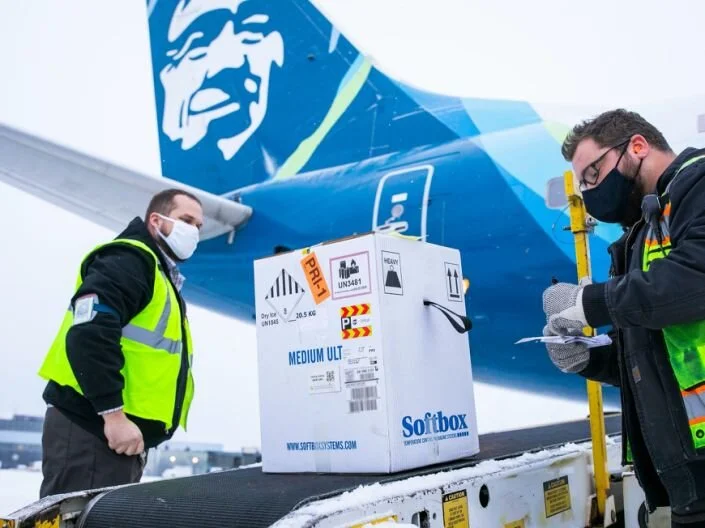Bigger than California, Texas and Montana combined, Alaska is a forbidding expanse of mountains, tundra and wilderness dotted with villages so remote that many can be reached only by boat or small plane.
Few places would seem to pose as many challenges for a vaccination campaign.
Yet more than 28% of Alaskans have received at least one dose of a COVID-19 vaccine — better than most states and well above the national average of 22%.
Dr. Anne Zink, the state's chief medical officer, attributed its success to decades of experience dealing with the logistical challenges posed by the state's harsh geography — to the point that even the process of getting Amazon packages to doorsteps has served as practice for vaccine delivery.
“Every Alaskan community looks different, and when we brought their representatives to the table, it was clear they each needed a different approach,” she said.
The public health system is well versed in getting childhood vaccines and flu shots to far-flung corners of the state.
Unlike most other state governments, Alaska has long needed to look beyond commercial pharmacies and partner with tribal health systems and community clinics that serve the most vulnerable groups.
There are few intermediaries in the state health system — Alaska does not have county health departments, for example — so state officials can provide resources directly to trusted local leaders, who then decide how best to address their population’s scenario.
In Indigenous villages in the Aleutian island chain, which stretches over 1,000 miles west from the Alaska Peninsula to Russia, health workers go door to door by dogsled to those without running water.
Project Togo, the current effort to get COVID-19 vaccines to 50 rural villages in the southwestern region of the state, was named after a sled dog who helped transport medicines during a diphtheria outbreak almost a century ago.
In an unusual arrangement with the federal government, the state receives its vaccine shipments monthly rather than weekly — a deal that Zink said state officials requested to allow for more systematic planning of how to distribute doses to match demand.
In the town of Petersburg, an island community off the coast of British Columbia, about half of the 3,200 residents have received at least one dose.
Jennifer Bryner, the chief nursing officer of Petersburg Medical Center, said she and her fellow administrators were given permission from the beginning to use the vaccines however they saw fit. That often meant that when elderly residents came for a vaccination, the people who brought them also got shots.
Her team conducts online polling through the website SurveyMonkey to gauge community interest and determine how many doses to request from the state.
If any doses are left at the end of a vaccination session, the medical center advertises them on Facebook. Bryner said not a single dose has gone to waste.
Linderman, of the COVID-19 task force, said that since eligibility requirements were lifted last week, Alaska has kept up with demand. Online dashboards where residents make appoints show about 2,000 slots still vacant in March.
“The concern was that providers would be hounded, that people would be knocking down their doors,” she said. "We haven’t seen that — just a consistent, steady flow of interest.”
Emily Baumgaertner
March 17, 2021
This story originally appeared in Los Angeles Times.
https://www.latimes.com/world-nation/story/2021-03-17/how-alaska-achieved-high-covid-19-vaccination-rate

